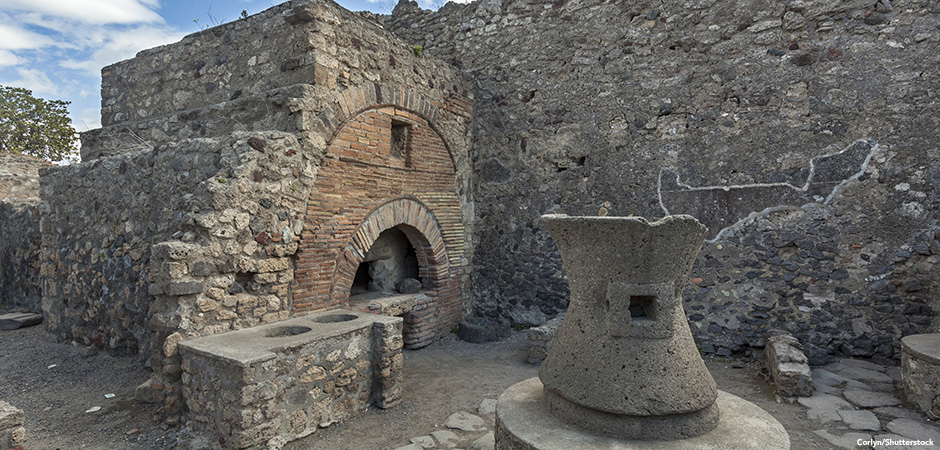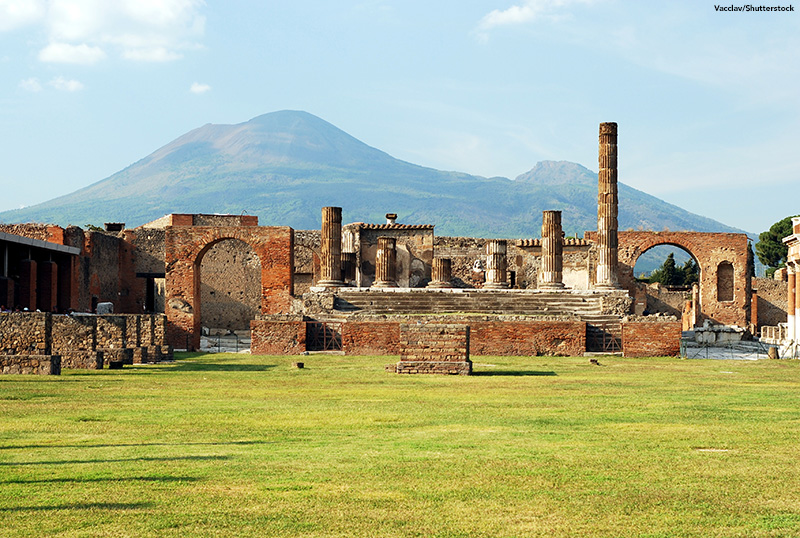
The ancient Italian city of Pompeii was buried under volcanic ash when nearby Mount Vesuvius erupted in the year 79 C.E. Since then, the city has sparked the imagination of people worldwide. Generations of archaeologists continue to make discoveries that reveal new clues about what life was like in the city. Today, while the digging, or excavating, continues, the emphasis is on preserving what has already been found for future generations–and that’s not always an easy (or cheap) task. Here, btw takes a closer look at this amazing and ever-changing World Heritage Site.
A Changing Focus
The first successful excavations of Pompeii began as early as 1594. But these digs were not carried out in a systemic or scientific way, and their only goal was to find art and artifacts to display in Italian museums. Nevertheless, these early excavations revealed buildings, coins, and other treasures. Later excavations became more scientific. In the last century, the focus has turned to preserving what has already been discovered, rather than on digging up more. Scientists have also used new technology and tools to take a closer and more careful look at elements of the site that may have been ignored in the past. This includes things such as kitchen utensils or microbes in the soil, which may not be as glamorous as earlier discoveries but nevertheless reveal a more complete understanding of what daily life was like in the first century.
For these reasons, roughly one third of Pompeii (about 22 hectares) remains unexplored. But in 2017, new excavations began. Why? In 2010, an important structure (Schola Armaturarum, the gladiator barracks) made headlines when it collapsed. Scientists learned that the reason for the damage was that the dirt of the unexcavated part of the city was literally pushing on the excavated part. Moreover, earlier excavation teams had dumped their excess earth on the unexcavated part, further adding to the weight and impacting drainage. These choices threatened the excavated part of the city. So, archaeologists began to dig a perimeter three kilometers wide around the unexcavated part, to create a space between it and the already-excavated ruins.
New Discoveries
The excavations begun in 2017 led to many new discoveries at the site, such as ancient houses and gardens, paintings, political inscriptions or writing, a chariot, and even the bodies of horses, residents, and enslaved persons. One discovery has been particularly remarkable. Scientists have always assumed that Mount Vesuvius erupted and buried the city on August 24 of 79 C.E. This was based on an ancient account written by Roman writer Pliny the Younger twenty-five years after the event. But an inscription on a wall, dated in the middle of October of that year, makes that impossible. So, the new date of eruption is now October 24, revising centuries of previous historical thought.

A Creative Solution
This most recent excavation work aside, in the future scientists will likely be spending their resources on preservation rather than on fresh digs. One concern is the erosion of the ancient site. Scientists must work constantly to prevent grass and weeds from growing on the walls and floors, which would break them down. In a northern section of Pompeii, which is off-limits to the public but has recently undergone excavations, scientists have come up with a creative solution to this problem. They are using a flock of 150 grazing sheep to eat the grass and weeds to prevent the plants from damaging the site. This method of erosion prevention is cost-efficient and gives visitors to Pompeii a more real-life experience, as grazing animals would have been part of the landscape in ancient times.
